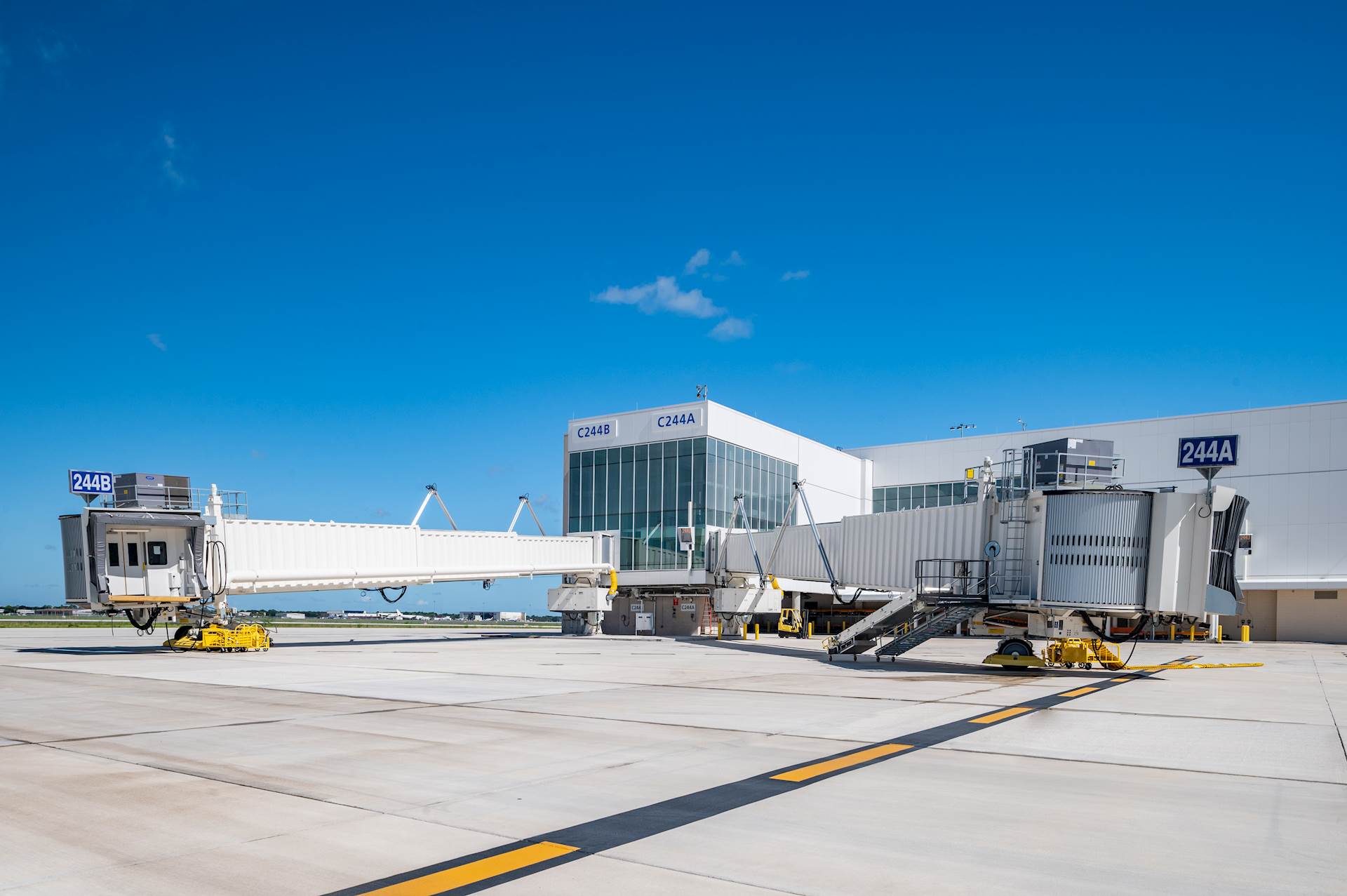 Hanson provided commissioning for Orlando International Airport's South Terminal C Complex.
Hanson provided commissioning for Orlando International Airport's South Terminal C Complex.
Energy resiliency is a critical factor in the future of every airport, and now is the time to start planning for a future that will demand energy-intensive facilities.
Last month's airport-focused Forming the Future post discussed energy and resiliency roadmaps for existing facilities and highlighted their role as a living document that can be used to set goals for:
- reducing energy consumption
- decreasing production of greenhouse gases (GHGs)
- increasing resiliency
The future of aviation holds many unknowns. Electrification, renewable energy and resiliency are all necessary steps on the way to the use of hydrogen or some other fuel source. One of the most important functions of the energy roadmap is thinking ahead and making certain new buildings and systems meet your goals.
Commissioning MCO South Terminal C
New buildings, systems and equipment should operate as efficiently as possible when they are turned over to the owner because, according to articles published by Airport Cooperative Research Program Report 139: Optimizing Airport Building Operations and Maintenance Through Retro-commissioning: A Whole-Systems Approach, the performance and energy efficiency of these types of systems degrade by approximately 4%-8% annually. An example is the commissioning Hanson provided for Orlando International Airport at the South Terminal C Complex, which includes the $700 million automated people mover complex, intermodal transportation facility and passenger drop-off lobby. Commissioning on this portion of the project was completed approximately three years ago. The South Terminal C Complex is a massive project and includes the new, approximately $2.7 billion South Terminal, which Hanson also commissioned. The new South Terminal C chilled water plant includes seven chillers totaling up to 12,000 tons of chilled water capacity, as well as all the peripheral equipment.
The energy use for these types of facilities and systems is enormous and includes all mechanical systems, baggage claim systems and more, so you need to make certain everything runs efficiently at turnover.
The Orlando International Airport South Terminal also has a dedicated emergency power generation plant that includes seven 4-megawatt diesel generators and underground fuel storage tanks that can store 120,000 gallons of fuel to provide emergency power. Hanson’s commissioning of this facility included:
- pull-the-plug testing of the whole facility and by automatic transfer switch
- fire alarm testing
- power quality monitoring
Make sure the law is on your side
With that in mind, airports should prepare for the future, look closely at energy and resiliency and begin to develop energy-resilience master plans.
Bill Bradford can be reached at bbradford@hanson-inc.com.
This article first appeared on Hanson’s Ascend blog on May 30, 2023.